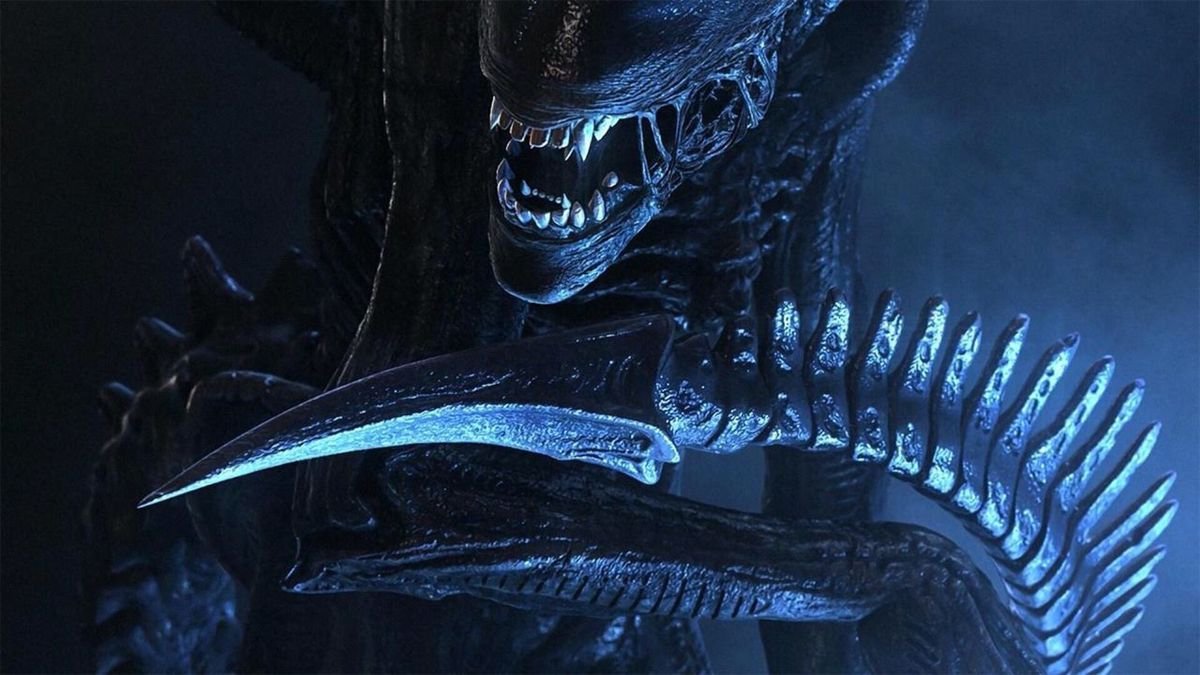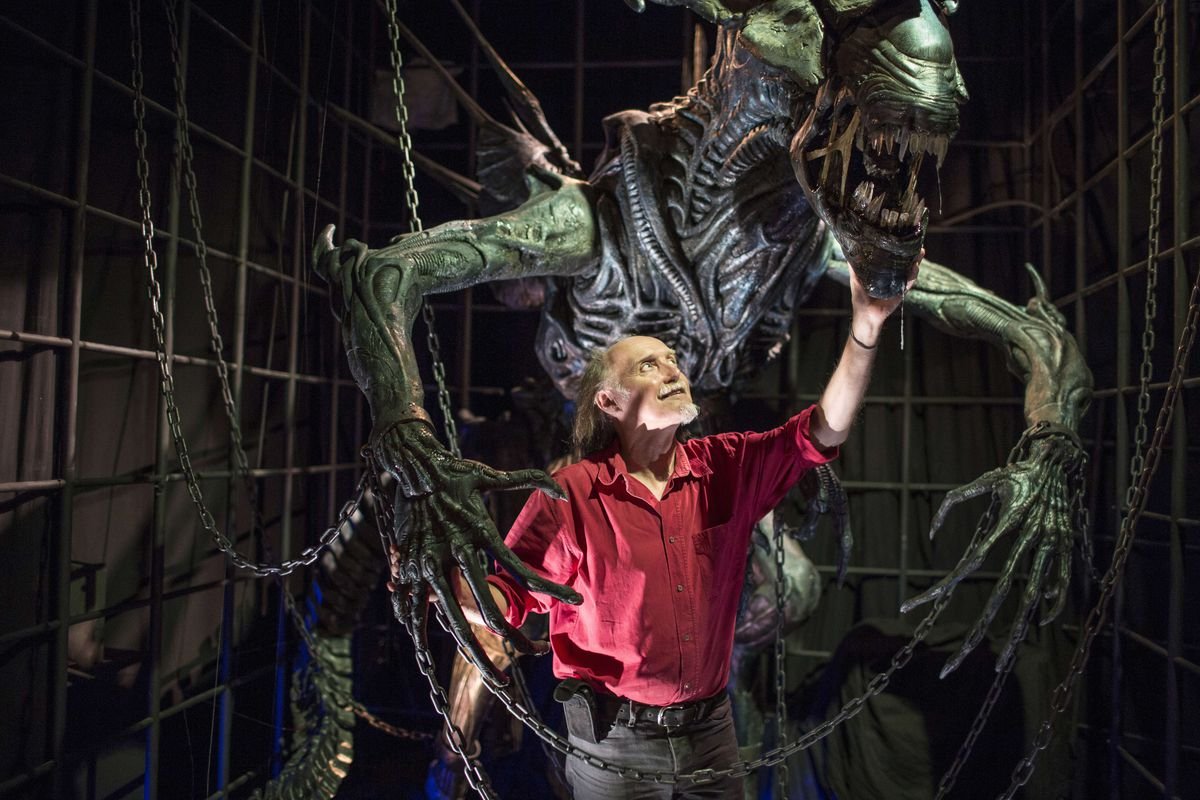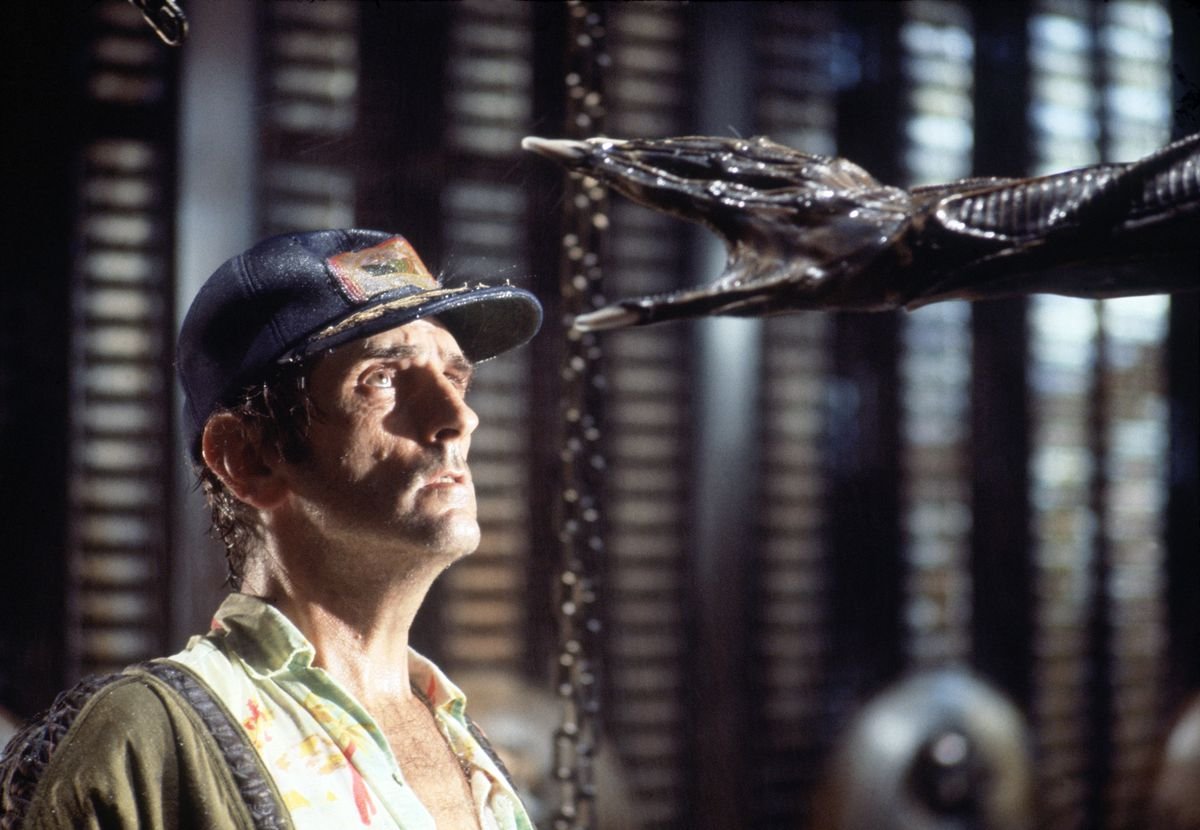Ridley Scott’s alien is still the perfect monster for any occasion
This feature on Ridley Scott’s Alien and the franchise it launched was originally published as part of a package about the most beloved villains in science fiction. To celebrate, it has been updated and republished Alien return to cinemas for an anniversary run.
By the time the Xenomorph officially shows up in Ridley Scott’s 1979 classic Alienaudiences have already seen it evolve from an ominous egg to a suffocating face-hugger to a small, pale creature that has ripped its way out of John Hurt’s bloody torso. That final scene, destined to appear on Scariest Horror Movie Moments lists until the end of time, reinforces many of the big conceptual horror film fears that drove it Alien famous – the fear of the unknown, the danger that lurks both outside and within us, and the fear surrounding sexual intercourse, pregnancy and forced birth.
With such a successful first half, the appearance of the adult alien towards the end of the film seems destined to disappoint the audience. Scott builds so much tension around these little nightmares and traumas that it’s a shame to have to reduce them to the purely external threat of a stuntman in costume.
In space, no one can hear you scream, but that doesn’t stop an evildoer from trying. This week, Polygon celebrates all forms of sci-fi villainy because someone has to (or else).
The revelation of the mysterious monster has doomed a lot of horror and science fiction to failure. The film history of both genres is full of clumsy creature outfits that throw out every ounce of atmosphere in a film. But the Xenomorph, conceptualized by Scott, artist HR Giger and special effects technician Carlo Rambaldi, is an exception to the rule. Despite all the sequels and multimedia mutations of the Alien franchise, the Xenomorph has remained extremely powerful. Its design and creepy introduction have made it forever malleable and ripe for horror.
Roger Ebert claimed that part of the Xenomorph’s original power lay in the fact that “we never quite know what it looks like or what it can do.” Alien is a far cry from previous science fiction films, films that often revealed aliens that looked primarily humanoid so they could be played by a man in a suit (something Scott struggled to hide by employing Nigerian artist Bolaji Badejo rent – a 6 foot tall movie star). 10, unusually thin and leggy actor – to play the alien). But even after its evolution is complete and the adult creature begins chasing humans around the creepy spaceship, the appendages and the muscular tail. .

Image: 20th century fox
The Xenomorph cannot be reduced to a simple sketch, which may make him the opposite of Michael Myers from last year’s series. Halloween. That was another film praised for having a terrifying main villain who is too strange for empathy. But Michael, with his dark overalls and plain white mask, is the epitome of pure visual simplicity. The Xenomorph, on the other hand, is all about complex details, seen in glimpses that make it difficult to take it all in at once. Between the chitinous, insectile surface and the multitude of shapes, it’s a biology lesson that viewers will have to work through for themselves after watching the film.
Even when the design became iconographic and repackaged into a serial brand, the basic form of the creature remained macabre and curious. How does something with acidic blood, nested jaws, and a head work as long as its body is alive? How does it sleep? How does it eat? Does it even do any of that stuff? Alien offers few answers and never allows viewers to become comfortable with the creature, or able to treat it as a known quantity. By the time Sigourney Weaver manages to send him hurtling through space, we still don’t know much about it other than clues to his ruthless nature, offered by a rogue android. The Xenomorph hatches, clings, grows and kills.
That simple biological rule makes the creature a perfect opportunity for all kinds of extrapolation and reinterpretation. Known as one of the best sequels of all time, James Cameron’s Aliens multiplies the number of monsters without losing what made the single one so horrifying. Cameron builds on Ripley’s confrontation with the Alien Queen, a huge monster that further reinforces the child-rearing scares from the first film.

Photo: Philippe Merle/AFP via Getty Images
Part of this quality is due to Cameron’s skill at pushing ideas forward in adventure sequels without stripping them of their effectiveness. (Who else could have transitioned from the murderous T-800 into… The terminator to the reprogrammed cyborg benefactor Terminator 2: Judgment Day?) But there is also a lot of praise due to the Xenomorph form. Even when he’s blown up to kaiju size and given a royal crest that defines his matriarchal role in the most literal sense, his villainy feels personal and unknowable.
The creature continues to reveal new forms Alien 3, Alien resurrectionand in the Alien vs. Predator series. They are all similar applications — in 3we see what happens when a Xenomorph clings to a dog and mimics its form. In Resurrection, we see a human/Xenomorph hybrid. In Alien vs. Predator: Requiemwe get the ‘Predalien’, the awkwardly named mix between Xenomorph and Predator. The creative results are mixed, but the template of the Xenomorph, a monster beyond reason, remains strong. Ebert’s idea of not knowing what to expect plays out throughout the franchise. Its inherent enigma and disturbing evolution allow it to grow no matter what new story twists are thrown at it. The way it changes from film to film is part of a natural process – or at least as natural as Hollywood’s constant demand for sequels allows.

Photo: Sunset Boulevard/Corbis via Getty Images
The animal beasts in Scott’s sequel, Alien: Covenant, get even closer to the appearance of the original creature. By then, the series had essentially turned the classic Xenomorph into the romantic ideal of a science fiction monstrosity. Almost 40 years after the original Alien, cinematic advancements, and in-universe advancements both led back to that groundbreaking Xenomorph. The special effects have changed considerably: the modeling, the puppetry and the stuntman hidden behind the too long limbs Velociraptor-like articulation of the Xenomorph has been replaced by CGI. The lore of alien mythology has also worsened, thanks to plentiful films, video games, comic books and novels.
But the core of the allure of the 1979 creature Alien remains. It is a callous, ruthless predator, and what knowledge it has is hidden behind a face completely removed from humanity. Over time, filmmakers have depicted it as fitting into humanity’s past, present, and future, allowing it to adapt and overcome across many time periods. It translates equally into shoot-’em-ups suitable for action films and explorations of birth and death. The first film calls it the “perfect organism,” and the franchise never really contradicts that claim. Both at the moment Ridley Scott And Don’t breathe director Fede Alvarez are planning new entries in the series, but that’s no surprise. To quote Yaphet Kotto Alienwhen you have a science fiction monster like that, “you don’t dare kill it.”
